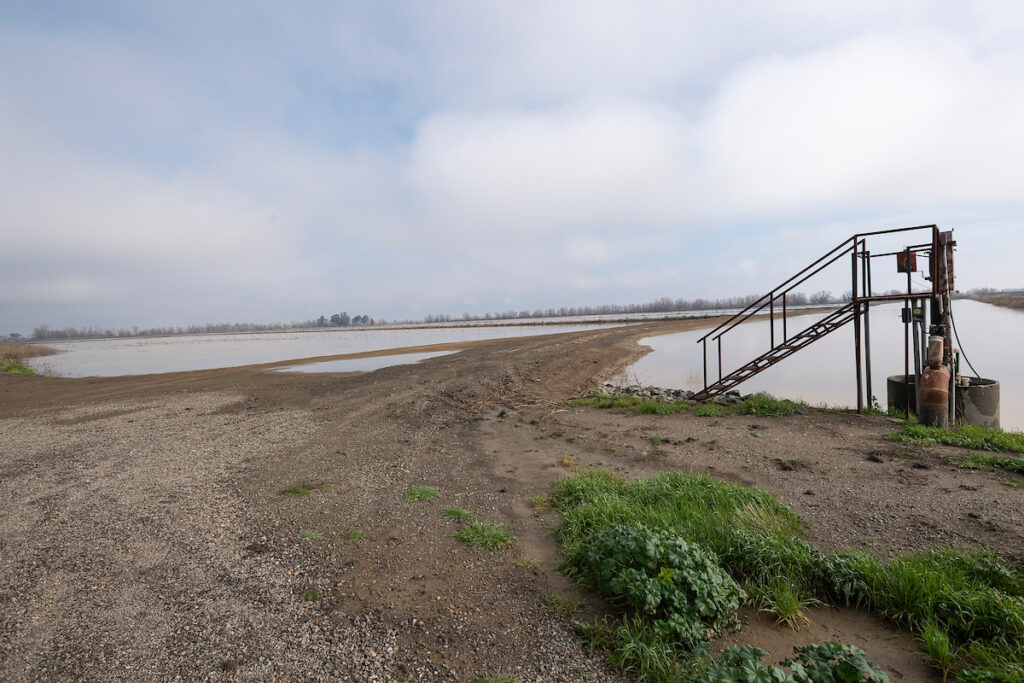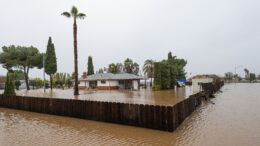The year began with a soaking for California. Nine atmospheric rivers doused the state, leaving at least 20 lives lost, roads washed out, and communities underwater.
Though it may have felt that way, the quick swing from drought to deluge isn’t uncommon: California naturally pivots between extremes.
“I think people forget how ordinary rain can be in California,” says Ann Willis, an engineer and California regional director at the nonprofit American Rivers. “It wasn’t too long after that series of storms when scientists were saying that this wasn’t climate change, this was a regular year for California. We just haven’t seen it for so long that we forgot.”
But that doesn’t mean climate-amplified storms aren’t coming. This year’s heavy rain events aren’t even close to what’s expected in the future as climate change makes weather whiplash more severe. That’s why it’s important for California — and other states — to start planning now.
“It was such a valuable message because this is why we need to think much more critically and urgently about rivers and how we’re managing water,” says Willis. “We can’t even manage normal water events, let alone what we know we should expect [because of climate change] in the future.”
The Revelator spoke to Willis about green infrastructure, whether we need more dams, and how to make sure water management is climate-ready.
What is California doing to cope with big swings between wet and dry?
California is accelerating its investment in multi-benefit green infrastructure. By that I mean things like accessing floodplains and setting back levees so rivers have enough space to carry these relatively modest flood events.
When we originally built our levees and our dams, it was with this mindset that we were going to capture all the water that we could and then divert it out of the channel. This is why our rivers are entirely overallocated from our water-rights system and why levees were built that really pinched our rivers down to a size that they were never really designed to function at.
To put it even more starkly, some of these really large dams in California’s Central Valley, for example, aren’t even designed to carry what was historically a flood event that would’ve happened 50% of the time, let alone 0.5% of the time.
It worked because we assumed we were going to capture and divert all the water in these large projects. However, now that we’re thinking differently about rivers, now that we’re seeing the extreme distress and collapse of freshwater ecosystems, and we have chosen as a community to then address those through creating healthy functioning rivers, we’re recognizing that we haven’t left ourselves with very good options.
This is why focusing a lot of investment on things like making room for rivers, restoring access to floodplains, restoring wetlands and meadows — these are all ways that we can naturally store, filter and improve the function of water moving through rivers.

California has experimented with flooding agricultural lands in winter to redirect high river flows into depleted aquifers. Has that been successful, and is it something that can be scaled?
It has been moving forward, and I think it’s a really great example of how a lot of this water management and conservation discussion is trying to be both realistic and forward facing. We really do need to take hundreds of thousands of acres [of farmland] out of production. It’s completely overdeveloped.
However, it’s not realistic to say that we’re taking all agricultural land out of production. So we have to focus on ways to integrate what we want to preserve in terms of our land with what we need to do to restore natural river processes.
How do we make those two things work together? By flooding almond orchards in winter we can start to recharge and restore our aquifers.
We’re seeing agencies start to accelerate the processes by approving permits for water diversions to flood agricultural lands in the winter. The places where we still need to see more investment, more development, is in the infrastructure to move that water.
We have a pretty good understanding of the state’s geology and where it makes sense to try this kind of approach and where it doesn’t. Moving the water to those places where the ability to infiltrate water happens more rapidly and efficiently, that’s where we need the conveyance infrastructure.
Our biggest opportunities to increase storage in the state actually lie below our feet.
Does that mean that new dams and reservoirs aren’t still on the table as a water-supply solution?
New reservoirs are on the table, but it’s not a good option. Just thinking about the larger, named dams, we already have almost 1,500 in California. So the idea of adding the 1,501st dam to address storage doesn’t hold much water.
More storage doesn’t create more water. What we saw in looking at these past rain events is that there was actually quite a bit of [reservoir] storage available to us, and that’s because these wet years really don’t happen all that often.
We’re much more likely, especially moving into the future, to be seeing drier hydrology, lower flows coming out of our rivers, less runoff for the same amount of precipitation. All of that’s related to climate change. And the surface water storage we have is already widely built out in all of the best places that we had to put a dam.
If we can think about the potential for groundwater storage, and not just surface-water storage, that’s really where the future of California water needs to be focused right now.
Is there anywhere else that’s doing this well that California could learn from? Or is California the example that other states should be looking to in terms of managing for more climate extremes?
We need to move into this next iteration of water management that isn’t so heavily based on hard infrastructure, and California really is a leader in that.
But the answer is also a little complicated because California is geographically so diverse. If California only had one problem like drought, then there are absolutely other places that are addressing these kinds of problems effectively. But California has all the problems.
So what we need is not just a strategy to manage water for drought, but we also need a strategy to manage water for our coastal streams with a lot of runoff. We need a strategy that manages water across nations because we have Tribal nations that are rights holders that we have to negotiate with within our state. The really tough part is trying to balance all those different approaches — whether it’s managing Colorado River water for almost desert-based agriculture in Southern California, all the way up to the Emerald Triangle in the north part of the state and managing for a completely different kind of agricultural and geographical economy.
Are there any projects you find inspiring?
One of the projects I’m involved with at American Rivers is Paradise Cut, which is modeled after the Yolo Bypass [on the Sacramento River]. It’s creating a bypass through an urban community, and also an agriculturally developed community, in order to make space for floods from the San Joaquin River.
We know that this kind of infrastructure is climate resilient, recession resilient, and it has the added value of bolstering ecosystem function, as well as providing flood protection.
American Rivers has also developed a tool looking at 14 indicators of socially vulnerable communities and laying that over flood-risk maps to try and understand where we see the most flood risk intersect with communities that have the least resources to manage it.
One of the highest priority areas that was revealed was in the Merced-Planada area [in the San Joaquin Valley]. And with this last series of atmospheric rivers, that’s exactly where we saw levees fail and communities flooding.
So now we have this roadmap to try and address these kinds of problems in some of the most vulnerable communities in the state.
We know that climate change is urgent, and there are opportunities to do things now that are going to reduce how serious the consequences might be in the future. The fact that we already struggle to manage relatively moderate flood flows should impress upon us the urgency of wanting to reduce the likelihood that we have to manage much more catastrophic events in the future.
Our droughts are going to get drier, our floods are going to get wetter, and there’s a cost to delay. The longer we delay, what we really lose is the opportunity to keep existing in this more moderate, manageable middle ground.
![]()
Previously in The Revelator:
Stormwater Could Become an Important Water Source — If We Stopped Ignoring It


